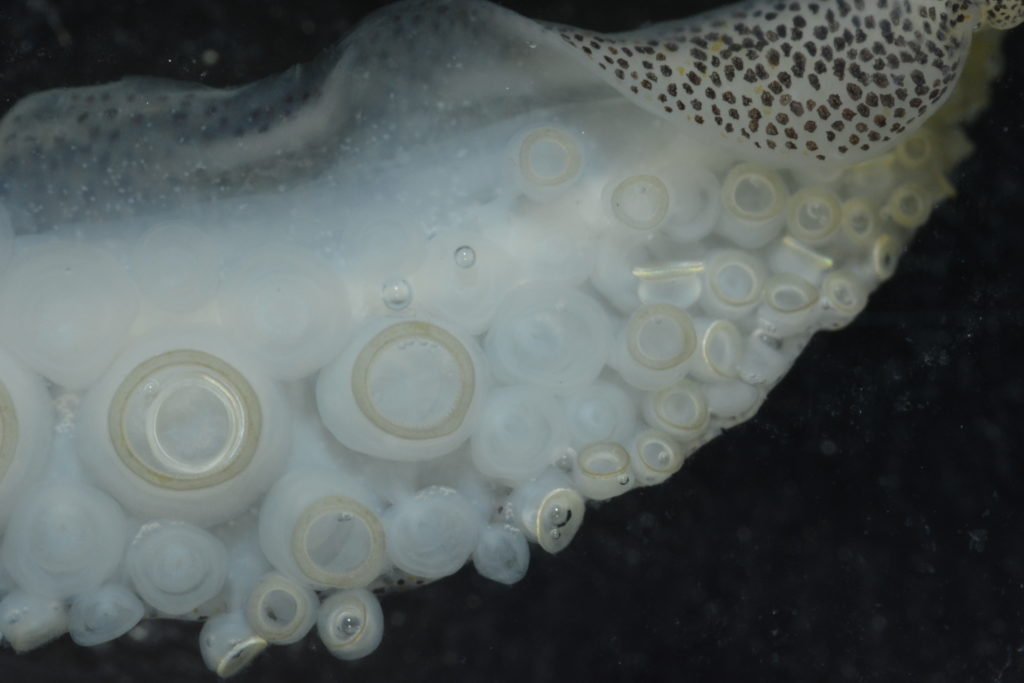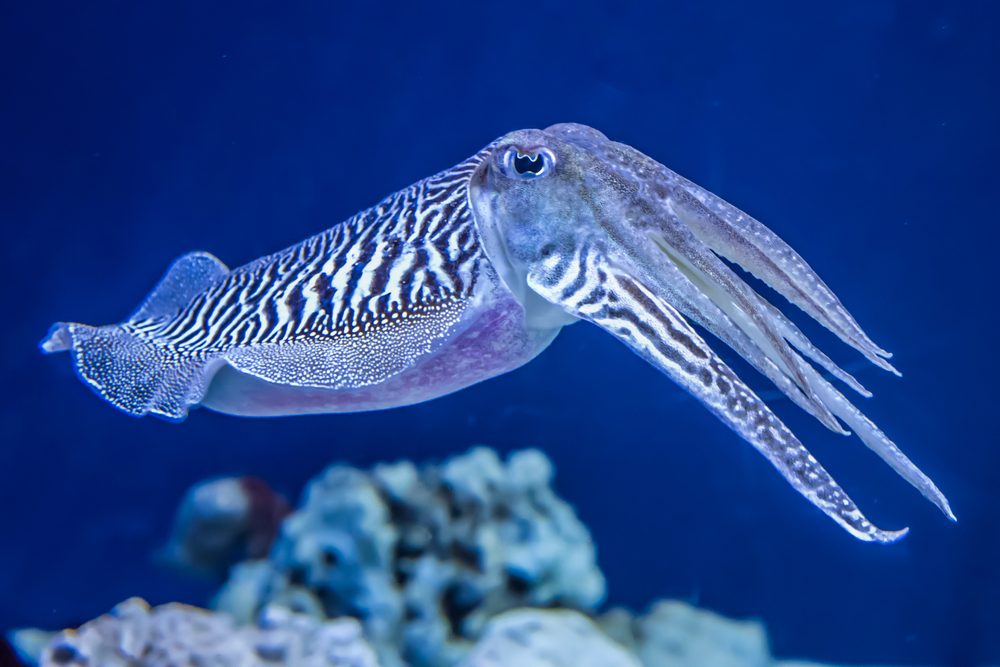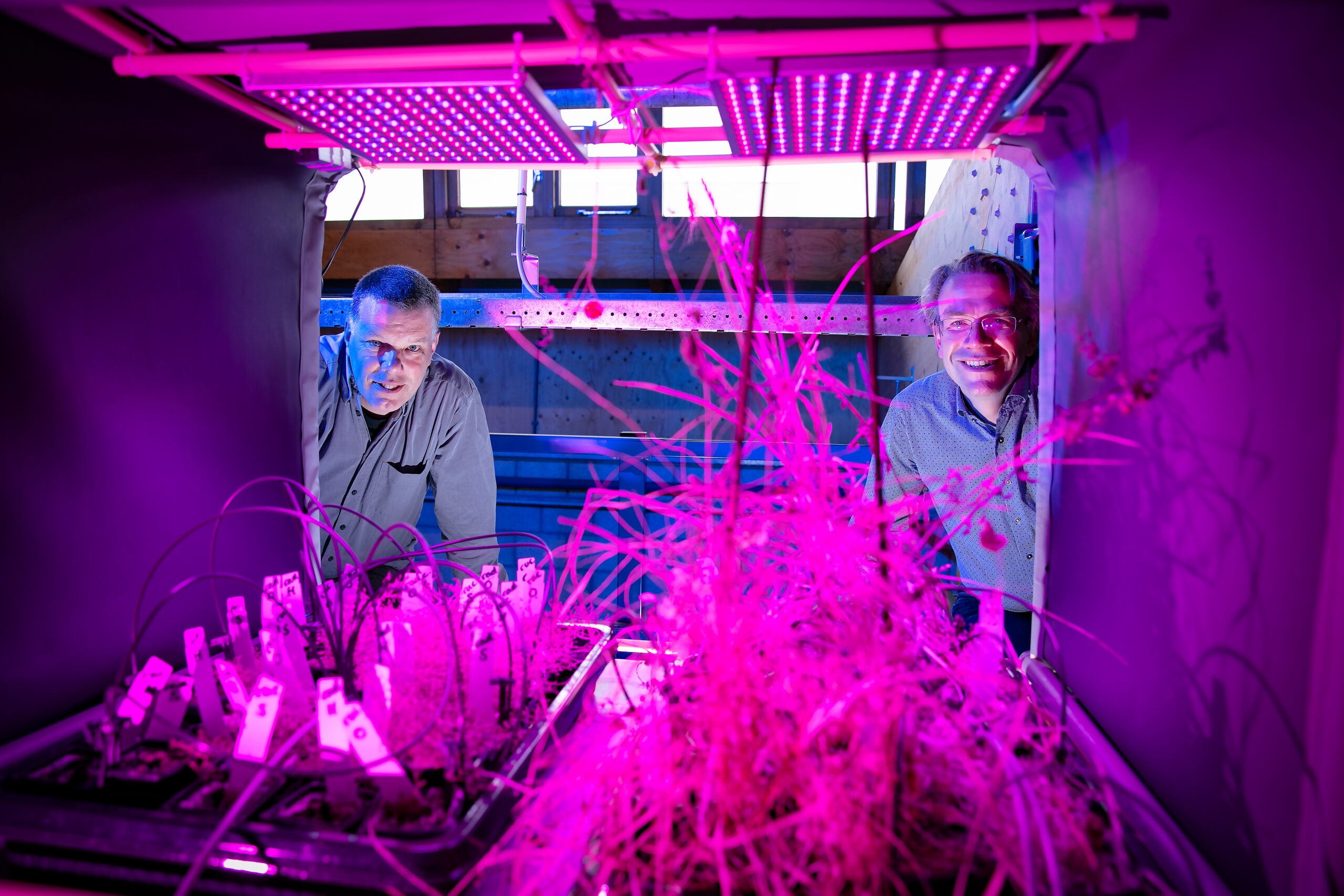The NWO awarded seven Vidi grants to WUR researchers. One of the winners is Guillermo Amador (Experimental Zoology). He is going to investigate the functioning and structure of the suction cups on cuttlefish tentacles. With this knowledge, he wants to develop better grips for robots that deal with delicate surfaces, for example, in surgery or strawberry picking.
Cuttlefish are the smaller cousins of the octopus but no less spectacular. ‘They have tremendous eyesight, are intelligent and can change colour, sometimes even rhythmically like a strobe,’ says Guillermo Amador, assistant professor of Experimental Zoology. ‘If you walk past the aquariums, they follow you. They are curious animals.’ The cuttlefish has two special shooting arms and eight normal arms. In one-tenth of a second, the cuttlefish shoots the capture arms towards its prey, for example, a shrimp. Each capture arm ends in a club densely packed with suction cups – the shrimp sticks to it. Besides the suction cups, the effect is comparable to that of a chameleon’s tongue.
Arm with a hundred fingers
With his Vidi grant, Guillermo Amador will investigate how the suction cups work in three steps and how this knowledge can be translated into robotics. He will hire a PhD student for each step. First, he wants to record how the cuttlefish uses its tentacles and suction cups. To this end, the cuttlefish is filmed with a high-speed camera while being fed a shrimp. ‘From the images, we can determine the velocity and acceleration and thus calculate the forces on the suction cup,’ Amador explains.

To reconstruct the suction cup, a second PhD student will characterise the tissues in the tentacle and suction cup. ‘The suction cup sits on a stalk and has a stiff rim like our fingernails,’ says the zoologist. One tentacle is like an arm with a hundred fingers. Amador wants to know how the muscles, collagen, and cartilage run around the suction cups.
Soft robots
A third PhD student brings the two studies together in a computer model to simulate the movements of the arms and suction cups. ‘We are building both a digital twin and a physical model of the arm.’ For the physical arm, Amador will recreate the suction cups with a 3D printer or by casting the shapes in soft plastic moulds. The model will then find its application in soft robotics.
A problem with current robots is that their grippers are too hard and sharp for soft objects or surfaces. Metal grippers can damage skin and organs during medical surgery, and picking robots can puncture strawberries and apples in fruit production. Amador is therefore working with TU Delft to develop medical soft grippers and with the Biosystems Engineering and Physical Chemistry and Soft Matter groups to make fruit-friendly gloves for the picking robots. He hopes to eventually reap the fruits of this fundamental research.

 De Europese zeekat.
De Europese zeekat. 